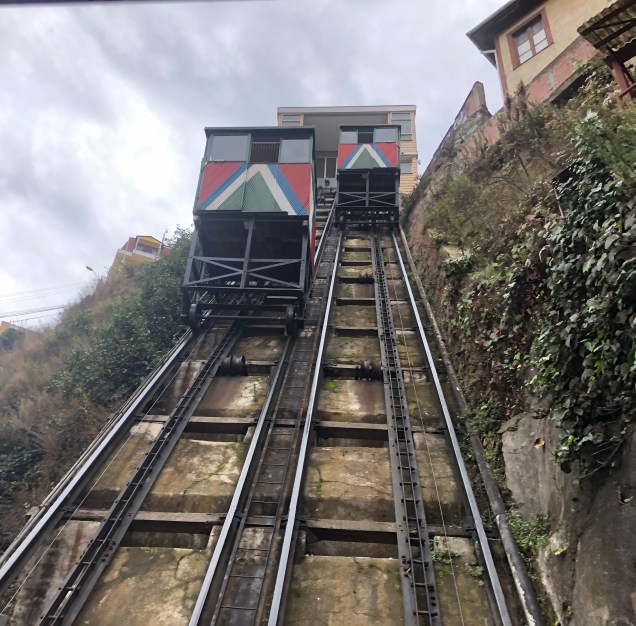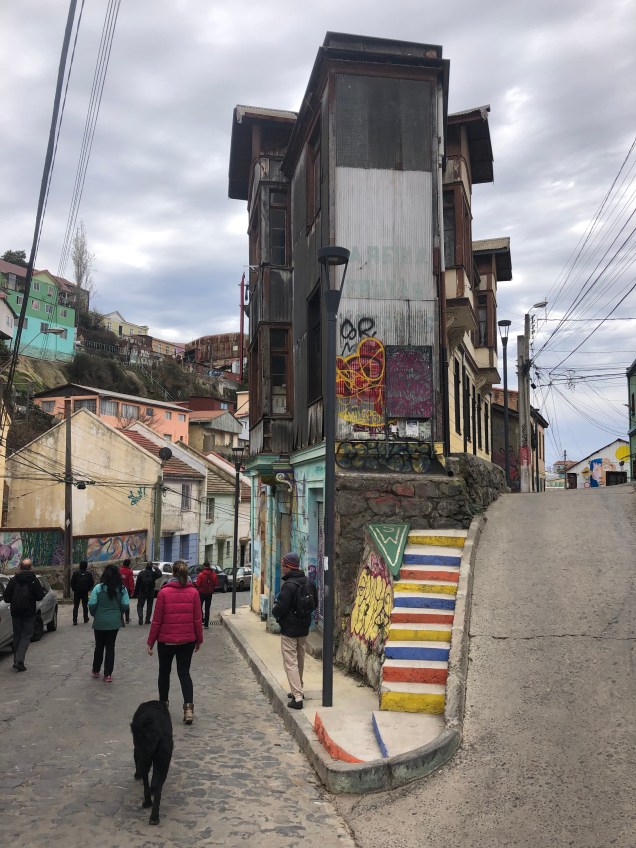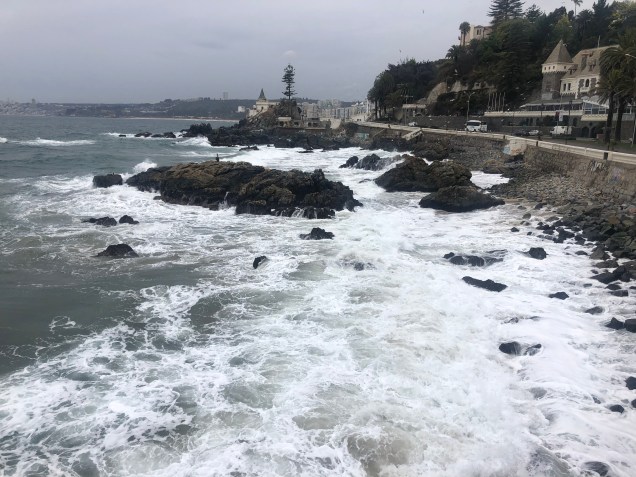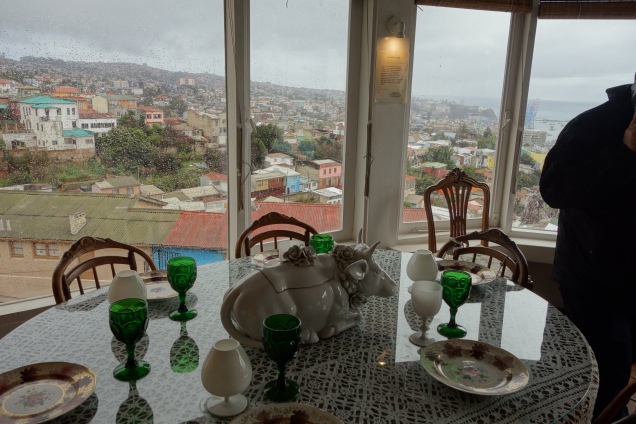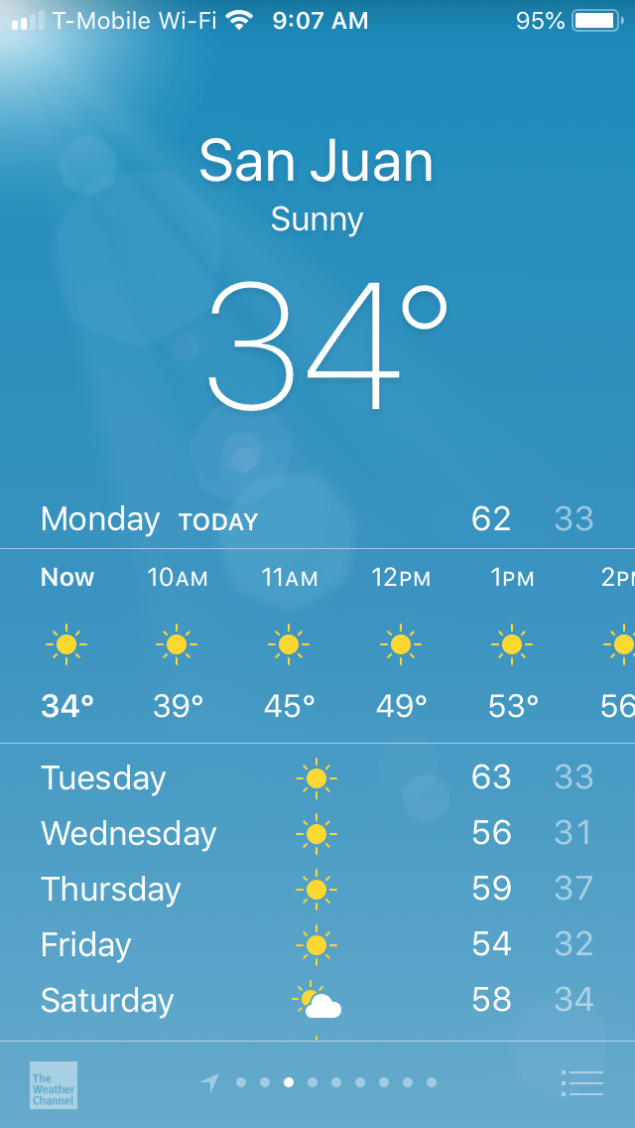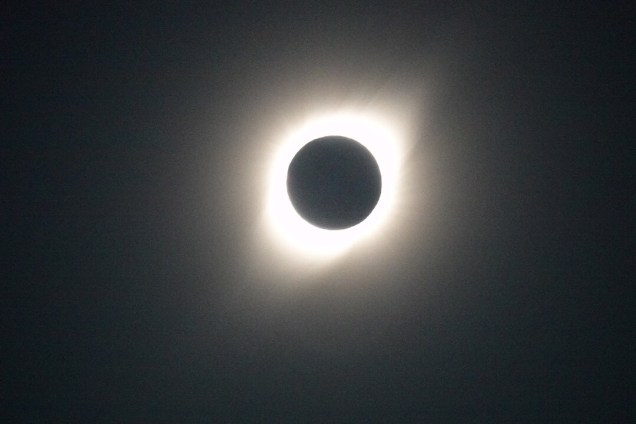 In the Mendoza Airport yesterday, I heard a woman talking about someone she knew who had seen 20 total solar eclipses. I know such people exist; they more or less dedicate their lives to traveling the world to wherever it is the sun will next be totally blocked out by the moon. (This happens only once every year or two.) When I saw my first total solar eclipse in 1999, it affected me so powerfully I vowed to see as many as I could for the rest of my lifetime. I’ve since decided this requires a level of nuttiness that, nutty as I may be, I lack. Seeing only three has taught me how many decisions you have to make, any one of which can turn out to be disastrous.
In the Mendoza Airport yesterday, I heard a woman talking about someone she knew who had seen 20 total solar eclipses. I know such people exist; they more or less dedicate their lives to traveling the world to wherever it is the sun will next be totally blocked out by the moon. (This happens only once every year or two.) When I saw my first total solar eclipse in 1999, it affected me so powerfully I vowed to see as many as I could for the rest of my lifetime. I’ve since decided this requires a level of nuttiness that, nutty as I may be, I lack. Seeing only three has taught me how many decisions you have to make, any one of which can turn out to be disastrous.
Solar eclipses follow an arc, so first you have to pick which point along the arc you want to aim for. The eclipse that just took place sliced across southern South America from (roughly) La Serena in Chile to Buenos Aires in Argentina. Steve and I have already explored Buenos Aires, plus we knew the eclipse there would take place almost at sunset. We’d never been to Chile, so that was most attractive to us.
On the other hand, this is winter in Chile, when rain and fog (the arch-enemies of eclipse-viewers) plague the coastline west of the Andes. That happens less as you move north of Santiago (where La Serena is), but if the weather wasn’t good, it wouldn’t be possible to drive to somewhere better, given how the mountains and the sea constrain this long, skinny country. That’s why we chose to spend a few days sightseeing in Santiago, then fly the short hop across the Andes to Mendoza in Argentina. If the weather looked ominous, we might have a few more options.
As it turned out, everyone lucked out. Days ago, the weather forecast for everywhere along the ecliptic path predicted sun. But there were still decisions to be made.
In Mendoza, we got our first sense of the excitement building. At dinner Sunday a fellow at the next table turned to us and asked in English if we had come for the big event. He was an amateur astronomer from Montreal, and we traded information and good wishes. Monday afternoon, we made the drive to San Juan (north of Mendoza) in just under two hours, and we saw non-stop TV coverage that evening and the next day at lunch. 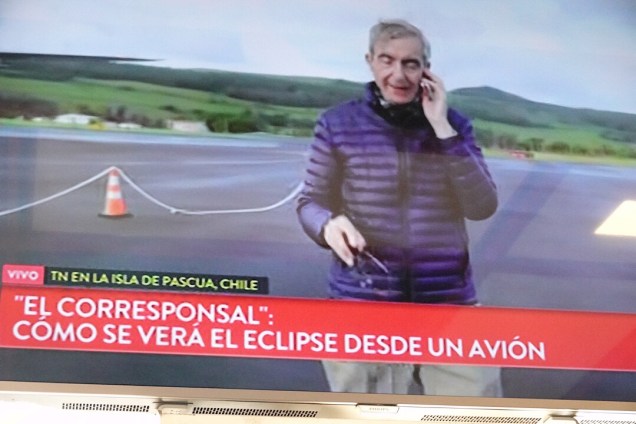 San Juan would be on the far southern edge of the eclipse arc, we knew, but the sun would only be totally covered there for about 30 seconds. In contrast, if we drove north to the center of the path, the eclipse would last close to two and a half minutes. Totality is so spectacular, you want it to last for as long as possible. But what I learned as I researched all this (months ago) is that there aren’t a lot of options for getting around in this part of western Argentina. Professional astronomy sites said the towns of Rodeo and Bellavista were likely to be best, but I had trouble finding them on any map (even Google’s). The only roads leading to them from San Juan crossed a mountain spur, and I could find no clue to what their condition would be.
San Juan would be on the far southern edge of the eclipse arc, we knew, but the sun would only be totally covered there for about 30 seconds. In contrast, if we drove north to the center of the path, the eclipse would last close to two and a half minutes. Totality is so spectacular, you want it to last for as long as possible. But what I learned as I researched all this (months ago) is that there aren’t a lot of options for getting around in this part of western Argentina. Professional astronomy sites said the towns of Rodeo and Bellavista were likely to be best, but I had trouble finding them on any map (even Google’s). The only roads leading to them from San Juan crossed a mountain spur, and I could find no clue to what their condition would be.
We finally figured out that if we drove north from San Juan on the main highway (Ruta 40) for about an hour, we would come to a tiny settlement called Talacasto where totality would last two minutes and 11 seconds. We decided to trade the extra 20 seconds we would lose by NOT going to Bellavista for the extra hour or two it would take to get there (and drive back, probably in heavy traffic, after dark.)
With our destination settled, and the weather looking good, one additional concern bothered me. At the two previous eclipses I’ve seen (in Bavaria in 1999 and Oregon in 2017), part of what thrilled me was the reaction unfolding all around. We weren’t in a huge crowd either time, but there were enough fellow viewers to make the experience collective; to hear the chorus of exultation and wonder; to see the tears, the upraised fists. I fretted we might wind up in a lonely place where we four were the only spectators. Steve and Mike couldn’t imagine this, but Mike had a solution: “We’ll pick up some wine, make a sign, and invite anyone who sees it to join our eclipse party.”
So it was that we stopped at the Carrefour in central San Juan, where we bought several bottles, disposable glasses, paper, and a marker. Michael worked on the sign…
…while we drove north through countryside that surprised us by its resemblance to Southern California: the Mojave desert (in places) and Anza Borrego (in others). Along the road, we spotted the first of a series of signs announcing a “Punto de Observacion” (eclipse observation point) ahead, which in itself reassured me. (If there was an official observation point, clearly we wouldn’t be alone.)
Along the road, we spotted the first of a series of signs announcing a “Punto de Observacion” (eclipse observation point) ahead, which in itself reassured me. (If there was an official observation point, clearly we wouldn’t be alone.) It also dispelled another worry: If the road led us to a point too close to the Andean foothills to the west of us, the sun might actually be behind them by 5:39 pm (when totality would start). But if locals had picked an observation point and then created and posted glossy signs leading to it, surely they must have chosen a site where the mountains wouldn’t block our view.
It also dispelled another worry: If the road led us to a point too close to the Andean foothills to the west of us, the sun might actually be behind them by 5:39 pm (when totality would start). But if locals had picked an observation point and then created and posted glossy signs leading to it, surely they must have chosen a site where the mountains wouldn’t block our view.
We got to Talacasto around 3:30 and found a large area already filled with at least 100 cars, yet still containing plenty of room for more. .
. We had no folding chairs like most of the local folks, but Michael scouted out a spot behind a half-built stone building that sheltered us from the wind.
We had no folding chairs like most of the local folks, but Michael scouted out a spot behind a half-built stone building that sheltered us from the wind.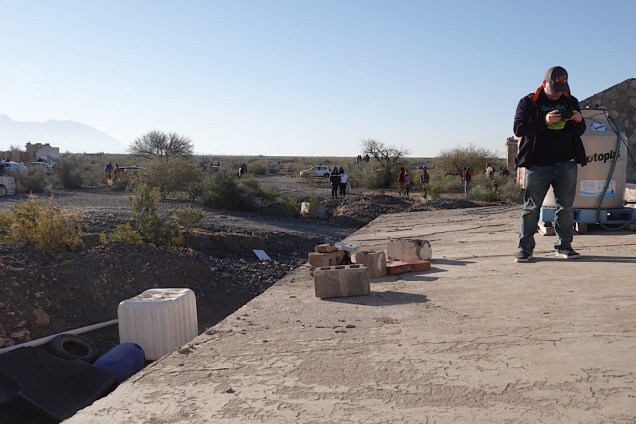 Climbing up on its roof offered excellent views both of the sinking sun…
Climbing up on its roof offered excellent views both of the sinking sun… and the surrounding crowd.
and the surrounding crowd. We anchored our sign with a cinder block and uncorked one of the bottles, poured ourselves a glass, and settled in to wait.
We anchored our sign with a cinder block and uncorked one of the bottles, poured ourselves a glass, and settled in to wait.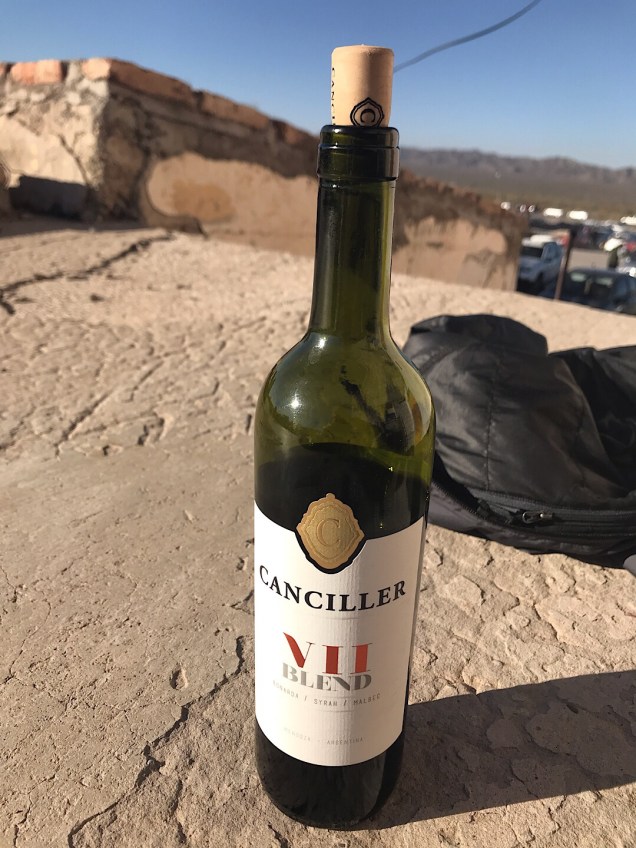
It didn’t take long for an Argentine couple to stroll by. I asked if they had eclipse glasses. (We had extra because I’d bought a 10-pack from Amazon.) They were thrilled by the offer, since they’d forgotten to get some. At first they demurred accepting the wine, but they broke down after a while, and we had a lot of fun chatting in English and Spanish with Edgardo (a CPA and aspiring website developer) and Nancy (a painter and art teacher). I offered more glasses (and wine) to a family of three from San Juan encamped nearby us, and they too accepted with delight. They eventually left their rig and brought mate (Argentine herbal tea) and cookies to share with our fiesta. We toasted the eclipse, toasted being alive in this enchanted spot to share this amazing experience together.
Because it was so late in the day, the light shortly before totality may have looked a bit more weirdly gray. But almost everything else echoed what I remember from Bavaria and Oregon. There was that same awe as the crescent seen through my glasses grew thinner and thinner then shrank to the magnificent jewel in what folks call “the wedding ring.” I took my glasses off just as its jewel of light blinked out and the sky turned from azure to navy. I remember seeing at least a few stars. But I was also drinking in the sunset glow at the horizon — not just in the west but for 360 degrees around us. I was making incoherent noises, at least one or two full-throated screams, and laughing.
Why do humans make so much noise during total eclipses? Birds grow silent. They sing when the sun re-emerges and the light comes back. Humans make noise then too. It’s time to celebrate. The sun is not lost forever. Life on Earth will go on.
After that, everything else was mundane and not worth writing about. Except one curious detail. No one seemed to be making any money off the eclipse (except the hotels and restaurants back in the towns and the tour operators who brought in large groups of gringos). The single restaurant in Talacasto (around which we all parked) was selling more drinks and snacks than it will ever again in all its lifetime, but no one was charging for parking or to use the restaurant’s bathrooms. Not one soul had created eclipse t-shirts or other eclipse-themed souvenirs (nor had they in Bellavista, according to other folks we talked to who had traveled there). I can’t explain this. It seemed amazing, though nothing, of course, as amazing as those two minutes and 11 seconds.


